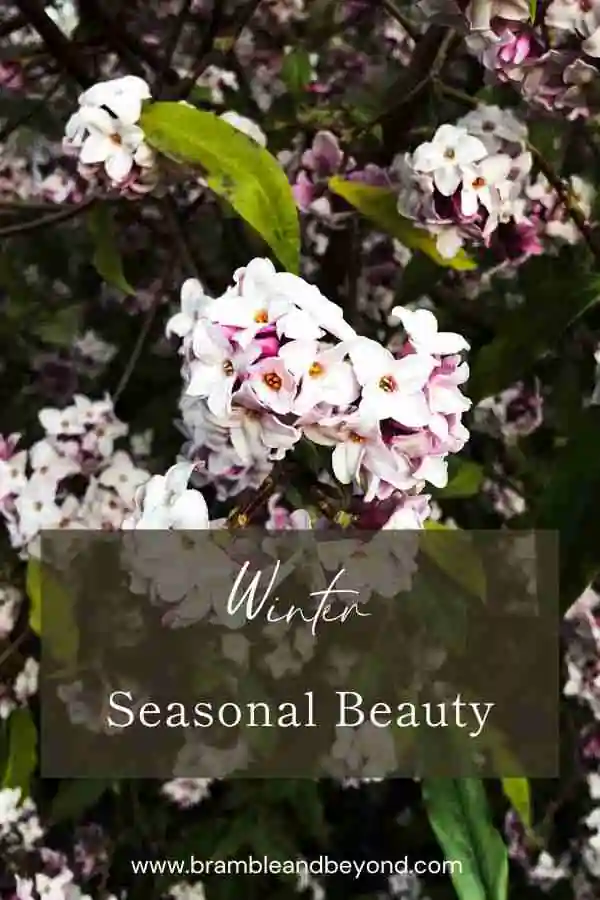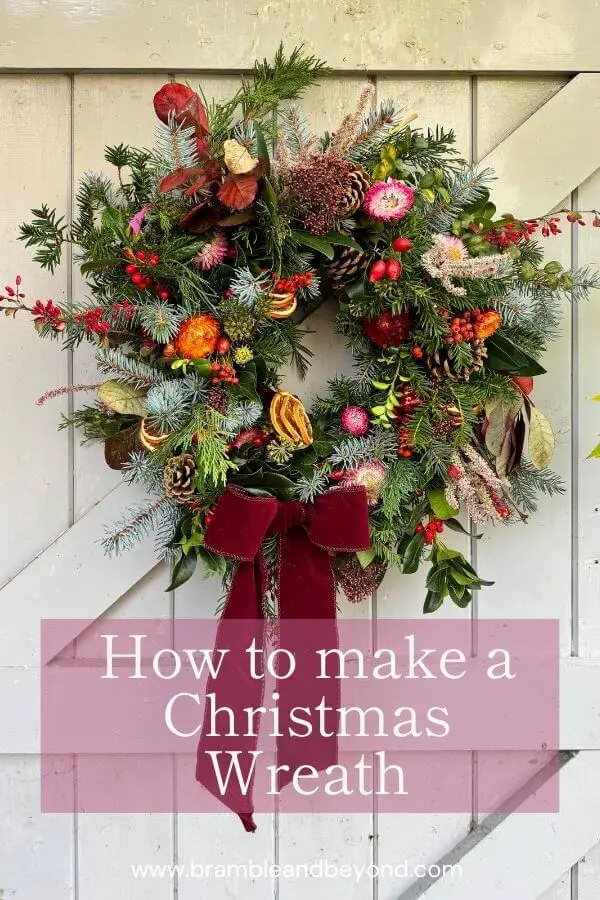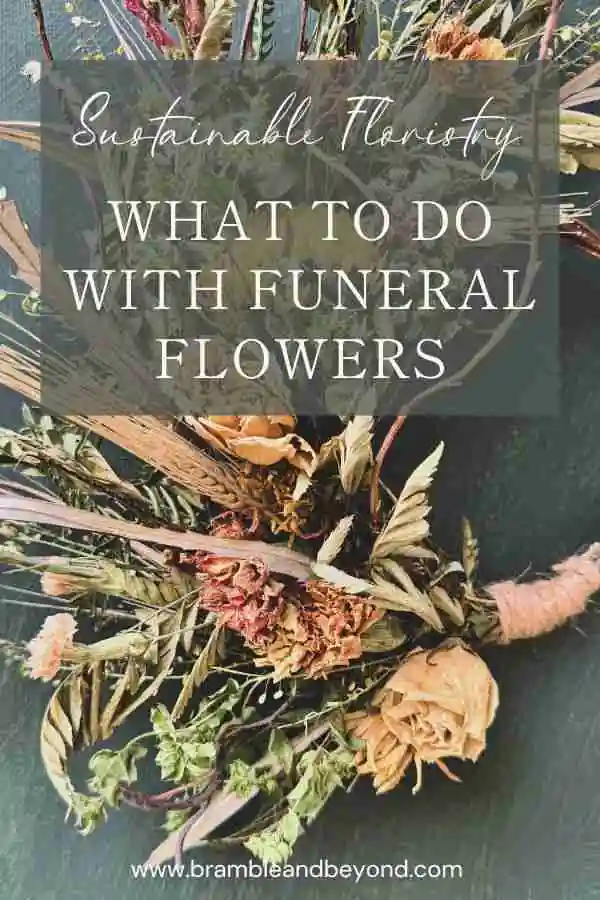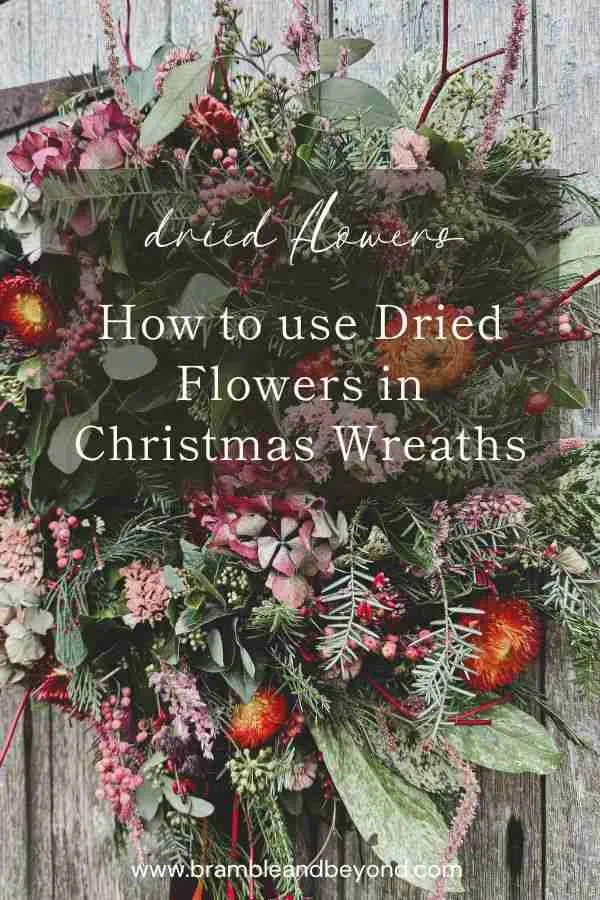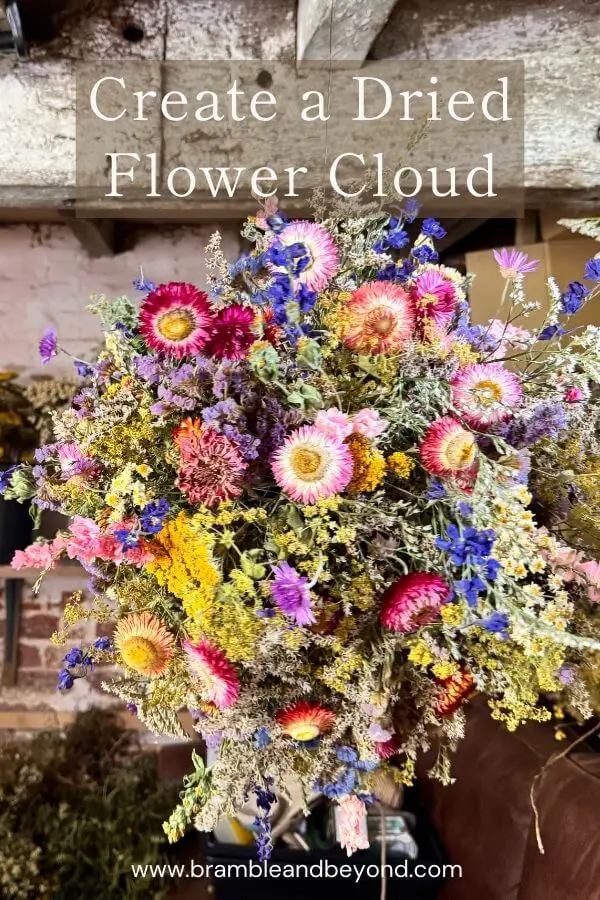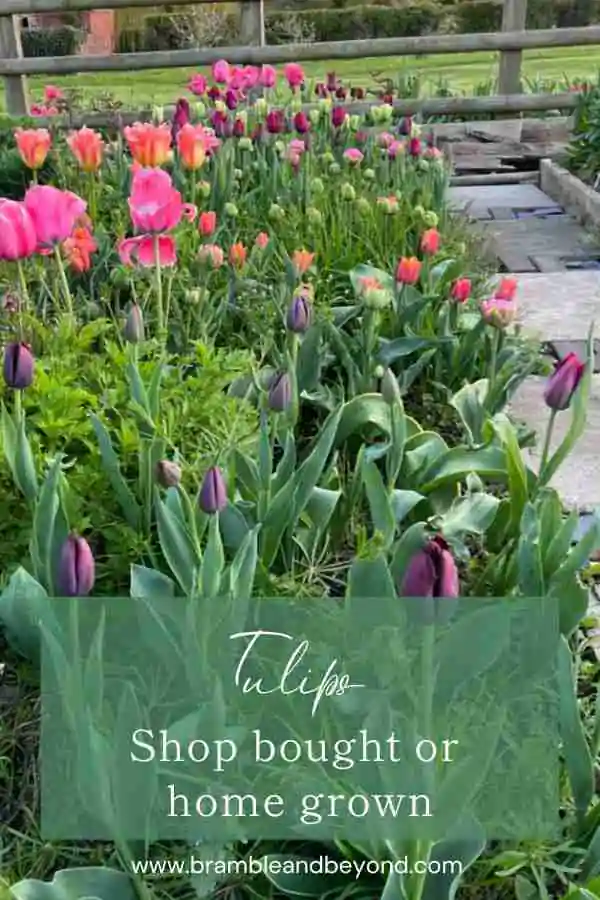Disclosure: This post may contain affiliate links, meaning I get commission if you decide to make a purchase through my links, at no cost to you. Please read my Affiliate Disclosure for more information.
During the cold, dark days of winter, you might feel like all you can do is stay warm and cozy indoors while planning your upcoming season’s garden. However, if you dare to venture outside, you’ll be pleasantly surprised by the variety of plants that offer something interesting to bring indoors. In actual fact there are quite a few flowers that flower in winter.
As a general rule, in winter many flower gardens might not have much in bloom since it’s typically the dormant season for most plants. However, you can still find some winter-blooming plants like witch hazel, hellebores, and winter jasmine that provide a splash of colour and interest.
But that’s just the beginning of the possibilities for floral decorations in winter.
What are the best flowers that flower in winter?
Depending on where you are and the weather, you can find a variety of beautiful flowers blooming in gardens during winter (December, January, or February). Here are some examples:
- Witch hazel: This lovely shrub sheds its leaves and produces fragrant, spider-like flowers in shades of yellow, red, and orange. In my garden, it usually blooms from January to February.
- Hellebores: Also known as Christmas roses, hellebores have charming cup-shaped flowers in pink, purple, white, and green. In my flower garden, they usually start blooming in February. But my neighbour has some varieties that start flowering in January, so if you choose your varieties carefully, you can enjoy a long display.
- Winter Jasmine: This evergreen vine is covered in bright yellow flowers, adding a splash of color to your garden all winter long. I have to admit, it’s not one of my favourite shrubs. It grows on the wall of my potting shed and always looks a bit untidy. In fact, I pass by it every time I enter my house, but I hardly notice when it starts flowering – I guess that says it all. It could be the variety I have or maybe my lackadaisical approach to its care doesn’t bring out its best. Note to self – find out the best time to prune it.
- Snowdrops: These delicate white flowers are one of the first signs that spring is coming and can start emerging as early as January. Again, my neighbour’s snowdrops start flowering as early as January, but I’m not as lucky. They start poking their heads up towards the end of January, but they’re really at their best in February.
- Pansies and Violas: These cheerful flowers can bring joy to your garden even in winter. They are often planted in containers in autumn and come in a wide range of colours, including red, yellow, blue, purple, and white. There are so many beautiful colours available, so don’t overlook them.
- Daphne: Daphne shrubs are known for their delightful fragrance and blossom on bare branches throughout winter. Mine can start blooming in December and doesn’t seem to stop until the leaves start to emerge, although some years are better than others. The pink daphne flowers are a delightful sight during the winter months, and the fragrance is simply bliss. Bring the blossoming branches inside and display them in a vase for a fragrant house.
Using a selection of these flowers, you can easily create a charming winter vase arrangement.
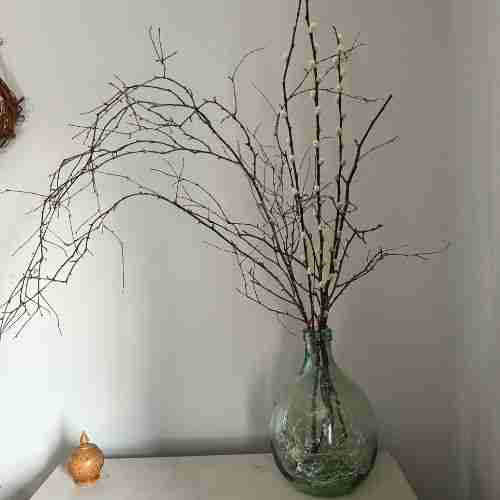
Please keep in mind that the blooming times of these flowers may vary depending on the climate and weather conditions in your area.
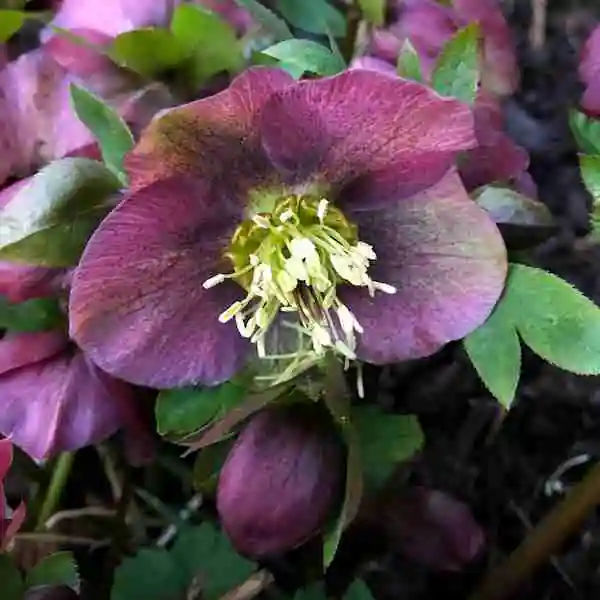
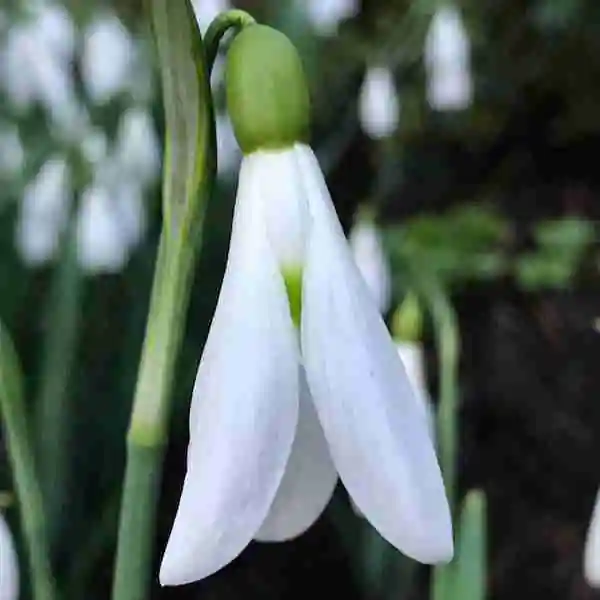
What can you fill a vase with in winter?
It might be a bit tricky to find fresh flowers from your garden to put in a vase during January and February, as many plants are taking a rest during this time. However, if you’re feeling creative, there are still plenty of materials you can use to fill your vase.
We’re all familiar with decorating our homes with fir and pine leaves for Christmas, making wreaths and garlands. And guess what? You can easily continue this tradition into January. The best part is that these natural decorations can last for a long time.
The list above should give you some ideas to get started, but if you take the time to explore, you’ll discover even more materials to use.
Foraged materials
Branches and twigs are readily available to forage, but please make sure to gather them responsibly without causing harm to the environment.
You can also search for materials like seed heads, bark, lichen, moss, and pine cones to enhance your arrangements.
During winter, you may also come across vibrant and textural berries such as holly, juniper, and mistletoe to add a splash of colour and texture to your vase.
Branches and twigs
In the winter, many plants may not have leaves or flowers, but you can still use branches and twigs to create a beautiful floral arrangement. With a touch of imagination and creativity, you can transform bare branches and twigs into something decorative that will add interest to your home.
I’ve developed a fondness for collecting sticks in recent years. I just can’t resist it. Whenever I come across an interesting twig on the ground, I feel compelled to pick it up, examine it, and save it for something special.
A few simple ingredients are all you need to create a captivating display in your home that will last throughout the winter.
One easy activity is to gather branches or twigs and arrange them in a vase or another decorative container. Personally, I have a large glass bottle dedicated solely to this purpose. Its narrow neck may not accommodate a bunch of flowers, but it’s perfect for a few decorative stems.
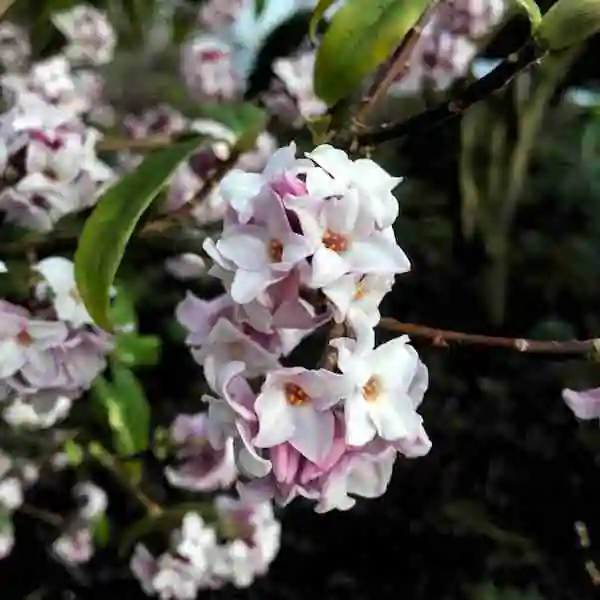
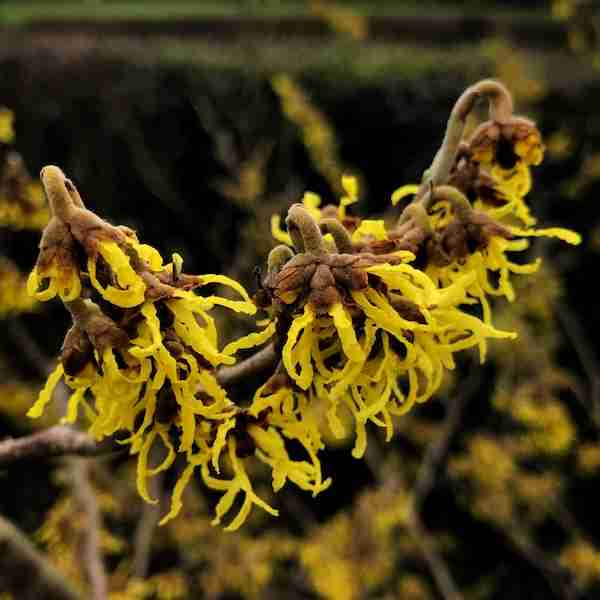
Some great options for branches and twigs that you can use to create a winter floral arrangement with a different vibe from Christmas are:
- Birch: Birch branches have a delicate and flexible stem with multiple branches, which allows you to create interesting arrangements. You can even find small seeds attached to them, adding more visual interest. I personally love hanging dried flowers from birch twigs to create a natural hanging arrangement with bursts of colour.
- Juniper: Juniper branches have blue-green evergreen leaves that can bring texture to a floral arrangement. Some juniper species also produce small, round berries in blue or purple. Adding juniper to your floral arrangements can provide a natural touch and enhance the overall texture. Just remember, it’s best to use fresh branches or berries to ensure they last as long as possible.
- Dogwood (Cornus): Dogwood branches have vibrant red or yellow bark, which can add both color and texture to an arrangement. These eye-catching stems can be used fresh or dried, and they work well on their own or combined with other flowers and branches. You can use Dogwood stems as a focal point in a bouquet, as fillers in floral arrangements, or to add interest to wreaths and garlands.
- Pussy Willow (Salix): The unique and fuzzy catkins of Pussy Willow bring texture and visual interest to bouquets and displays, giving them a soft and lovely appearance. When using pussy willow in floral arrangements, it’s best to cut the branches when the catkins are still in the early stages of development. This way, they will be less likely to fall off and will maintain a fresh look for a longer period of time.
Dried flowers, grasses and seed heads
Dried flowers, grasses, and seed heads are some of the key elements in winter floral decoration. You can use them to create a charming and natural display or something more striking.
Dried flowers have become increasingly popular in recent years, and it’s easy to see why. However, the options available nowadays are far from the 1970s pampas grass and statice. They are much more modern and vibrant.
Wreaths and garlands are no longer limited to Christmas. They can be used to decorate your home at any time.
If you have an abundance of flowers in the summer, consider drying them. Most flowers can be dried using the right technique, so it’s worth giving it a try.
The vibrant colours of freshly cut blooms will fade and soften a bit during the drying process. Nevertheless, if done correctly, some colour will remain, allowing us to capture the essence of summer all year round.
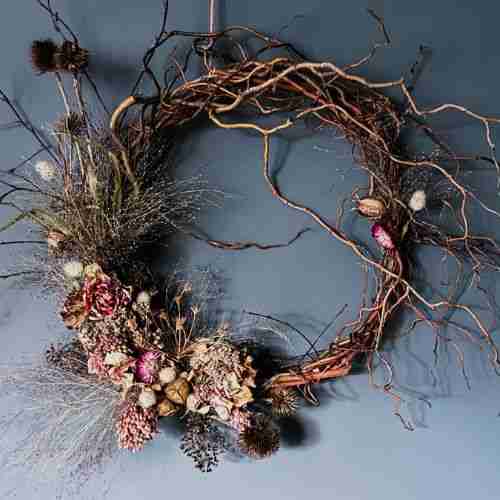
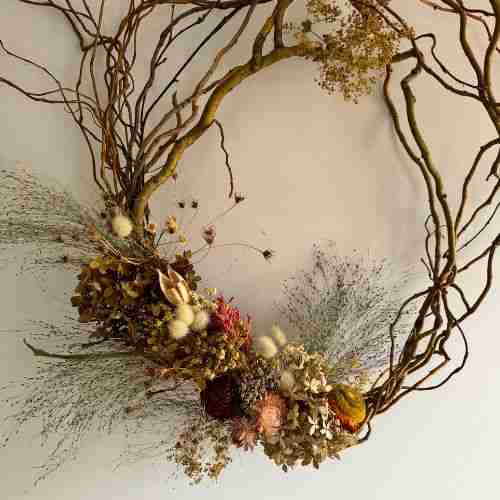
Enjoy your winter garden
Winter can be a delightful season for flower enthusiasts. Embrace the charm of flowers that flower in winter to create stunning indoor arrangements that bring the beauty of nature inside. Whether you opt for sustainable flowers, cultivate your own, or simply enjoy the art of flower arrangement, the options are limitless.
As Ralph Waldo Emerson beautifully expressed, “The Earth laughs in flowers.” Let your home radiate joy as you fill it with the enchanting beauty of winter flowers.
Always remember, nature’s beauty knows no limits, even in the coldest of winters!
If you are ready to buy your seeds I have all of the easy cut flower seeds to grow in my shop. Shop Now

